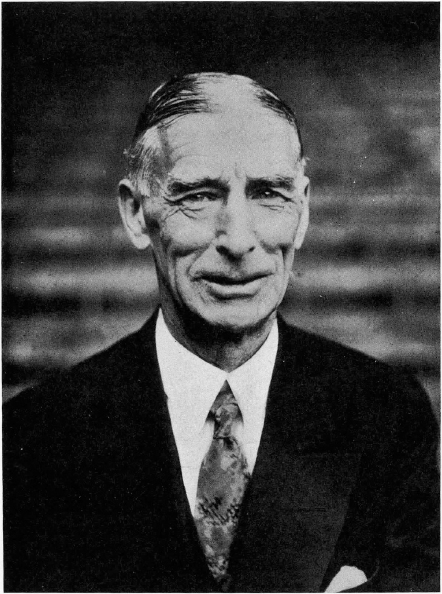FREDERICK G. LIEB
Copyright 1945 by Frederick G. Lieb.
Reprinted by arrangement with G.P. Putnams Sons,
a member of Penguin Group (USA) Inc.
at the Library of Congress.
IN 1945, two years after G.P. Putnam began its celebrated series of baseball team histories, it published a biography of Connie Mack. The Mack biography would have a major impact on the team history series because Putnam went on to publish histories for only fifteen of the sixteen major league teams. Missing from the series was a history of Connie Macks Philadelphia Athletics, those White Elephants of the American League.
Putnams decision not to publish a team history of the Philadelphia Athletics is understandable because, at that time, a biography of Connie Mack was the equivalent of a history of the Athletics. When Ban Johnson converted his Western League into the American League for the 1901 season and added four eastern teams to challenge the territorial monopoly of the National League, he selected Mack to take over the Philadelphia franchise as manager and part owner. Mack would stay on as manager, while eventually becoming the president of the Athletics in 1937, until he stepped down after the 1959 season at the age of eighty-seven.
Another reason Putnam may have decided against a team history of the Philadelphia Athletics was their extensive working relationship with the prolific and legendary baseball writer Fred Lieb. One of the first members selected for the Baseball Hall of Fames writers wing, Lieb broke in as a baseball journalist in 1909 and covered every World Series from 1911 to 1958. He wrote the Connie Mack biography for Putnam and was also the author of six of the fifteen Putnam team histories. His biography of Mack eventually became, for Putnams editors, Liebs seventh team history in the series.
After an opening section on the early life and career of Connie Mack, Liebs format in the biography is essentially the same as the one he used in each of his team histories. Beginning with the McGillicuddy Meets Ban Johnson chapter, the book becomes, until the last section, the history of the Philadelphia Athletics. Once the story of the Athletics franchise begins, the chapters follow the same season-by-season narrative, highlighted by detailed accounts of World Series games, common to all of Liebs team histories in the Putnam series.
Leibs shift from a portrait of Connie Mack to a narrative of the history of his celebrated teams and colorful players is fortunate for readers of the biography. In his Preface Lieb admits that the tall New Englander was an early hero and that he never quite has got over this early hero worship. He also notes that his personal friendship with Mack has only increased his respect and admiration.
Not surprisingly, the early chapters of the biography are pure hagiography. Liebs story of Macks journey from the shoe factories of Brookfield, Massachusetts, to the baseball diamonds of the major leagues is the stuff of the American Dream. For Lieb, Macks rise to fame from his humble beginnings is a saga of American enterprise and opportunity. Praising Macks brave heart and loftiness of spirit, he describes him as much more than a great baseball man he is a great American.
However, once Liebs great baseball man and great American takes over the operation of the Philadelphia Athletics in 1901, he becomes, in the biography, more of a dugout conductor and anecdotal witness to baseball history than one of its major players. Beginning with Macks acquisition of the alligator-wrestling, fire-engine chasing Rube Waddell and the Athletics first American League pennant in 1902 (the first of nine for Macks Athletics), Leibs biography becomes a celebration of two remarkable dynasties in Philadelphia Athletics history and the Hall of Fame ballplayers who shaped those dynasties.
Macks 1902 American League Champion didnt have the opportunity to play in a World Series (the first was played in 1903), but his 1905 pennant-winner went up against John McGraws New York Giants in baseballs second World Series (McGraw refused to play a World Series against the American League in 1904). Macks first World Series, however, ended unhappily when his team lost after Giant pitchers threw four shutouts, including three by Christy Mathewson.
Five years later, the Athletics finally rewarded Connie Mack with his first World Championship when they defeated Frank Chances Chicago Cubs in the 1910 World Series. Macks team, led by its famed $100,000 infield, would go on to win three more pennants in the next four years and gain a measure of revenge against McGraws New York Giants with World Series victories in 1911 and 1913.
After their surprising and devastating defeat to the miracle Boston Braves in the 1914 World Series, Connie Macks Athletics plunged into last place and stayed there for the next seven years. It wasnt until Mack slowly rebuilt the Athletics in the 1920s that his team went on to win three more pennants and two World Series championships.
With a powerful lineup, led by sluggers Al Simmons and Jimmy Foxx and the Hall of Fame battery of pitcher Lefty Grove and Mickey Cochrane, the Athletics, in 1928, unseated Babe Ruths New York Yankees as reigning American League champions and defeated the Chicago Cubs in the World Series. They won the pennant again in 1930 and defeated the St. Louis Cardinals in the World Series. It was Connie Macks fifth world championship, but it was also his last.
Connie Macks powerful Philadelphia Athletics won their third straight pennant in 1931, their ninth and last in franchise history, but, this time, lost the World Series to the Cardinals, thanks to the brilliant play of Pepper Martin. The World Series loss was the harbinger of things to come for Connie Mack. With the Great Depression bearing down on the franchise, Mack began to sell off his great players, and, by 1935, his decimated team fell into the American League cellar and stayed there until the 1943 season.
Once Liebs biography reaches the 1935 season in a chapter called Riding the Bumps Again, the narrative shifts back from its season-by-season account of the Athletics to a final celebration of Connie Macks life and career. The last few chapters cover his ascension in 1937, at the age of 75, to the presidency of the franchise and the many honors bestowed on him, including a special Connie Mack Day proclaimed in 1941 by the Pennsylvania state legislature. The last chapter of Liebs biography, Still Going Strong at Eighty-two, takes Mack through the 1944 season and the Golden Jubilee celebration of his managerial career.
At the beginning of the 1945 season, Connie Mack said that he was still having fun as manager of the Philadelphia Athletics and wouldnt step down until he acquire the bad habit of repeating himself. While Leibs biography ends at that point, Mack continued on as manager of the Athletics until the end of the 1950 season. He died in early 1956 at the age of 93, just a little more than a year after his beloved Philadelphia Athletics franchise moved to Kansas City.

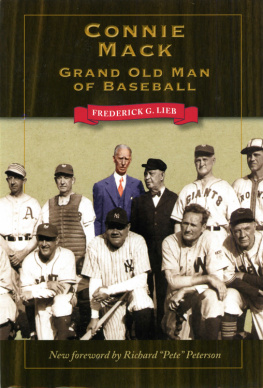

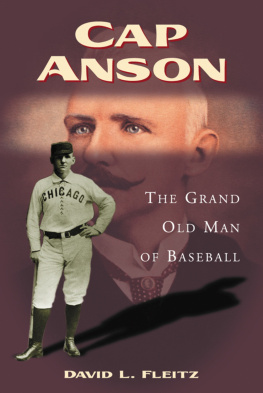
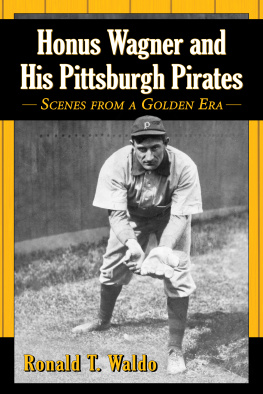
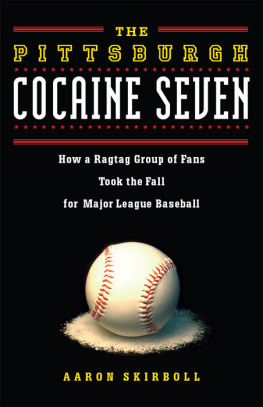
![Baseball Info Solutions. - The Bill James handbook 2014: [the complete up-to-date statistics on every major league player, team and manager through last season]](/uploads/posts/book/187296/thumbs/baseball-info-solutions-the-bill-james-handbook.jpg)



